Over time. missing teeth can result in serious complications, if left untreated.
A tooth here, a tooth there.
With the human dentition containing a total of 32 teeth (28 if the wisdom teeth have been removed), it is understandable why some people still believe that it is not essential to replace missing teeth when there are other teeth still left to do the job.
The Domino Effect
The loss of a permanent teeth leads to a whole host of other problems if it is not replaced in a timely manner. If it’s true that a picture paints a thousand words, then let’s look at the one below:
This is a typical scenario when even just one tooth is removed without being replaced. At first glance, you can see some movement and tipping of surrounding teeth, but it’s the significance of this situation that needs further explanation.
Teeth are arranged in the jaw in such a manner so that they support one another and withstand the chewing forces together as a team. When one is lost without being replaced, it sets into motion a collapsing situation where teeth begin to move out of position and alignment. Convincing patients that are in pain or injured that they need immediate treatment is not difficult because their signs and symptoms are usually sudden and uncomfortable. A situation like this is not often ignored for too long.
However, the destabilization that occurs with dental collapse happens over a period of time. The signs are not as obvious and damage is often taking place silently. It is easy to understand why treatment recommendations are sometimes ignored or postponed.
Supraeruption (Over-eruption)
Although the process is more complex, quite simply put, when teeth first appear in the mouth they emerge out of the bone and gum tissue as their roots and surrounding bone grow and push them out. The only reason they stop is because they meet the teeth that are also emerging in the opposite arch. Their biting surfaces fits into one another like a puzzle and an even distribution of contact throughout the entire dentition allows for proper chewing and equalized forces.
When an opposing lower tooth is lost and not replaced it’s upper partner now has no opposition and begins to adapt to this new space by moving downward. In doing so, it loses contact with it’s neighbouring teeth on either side and begins to bite more heavily with the teeth in the opposing lower arch. The bite is thrown off it’s ability to distribute an equal force among all the teeth, and this can cause headaches, jaw tension, root exposure, tooth breakage, grinding, clenching and wear.
Tipping
When a tooth is lost and not replaced, the bone shrinks in the space and the teeth on either side now have a vacant area in which to tip and move into. In doing so, they lose contact with their other adjacent teeth. Teeth are designed to touch one another to prevent food impaction that can damage tissue and cause cavities. If enough of the vacant space becomes occupied by tipping teeth then the space becomes too small to make replacement a viable option without modifying other teeth.
Loss of Contact
Teeth that are beside one another contact each other at their greatest bulge (curvature). Think of the place between two teeth where your floss “snaps” through. This is the contact point. Although gum tissue hides the area underneath, there is actually a space between the gum and the tooth. Your floss cleans out any food and plaque that may accumulate here, but one of the reasons for a curvaceous shape of the tooth crown is to prevent too much food impaction by deflecting food away from this area. When teeth are in alignment with one another, this action works well and efficiently.
Plaque and Food Impaction
Aside from the first space that was created by the missing tooth, more spaces begin to develop as adjacent and opposing teeth begin to move out of their original positions. These teeth lose contact with their neighbouring teeth and leave spaces and pockets into which plaque and food can gather. Oftentimes food impaction occurs frequently and can be difficult to remove as the space continues to grow. Plaque and food accumulation leads to cavities, gum and bone destruction and gum disease.
Bone Loss
During the formation of teeth, bone grows in and around the root of the teeth for support and nourishment. Teeth are necessary to maintain healthy jaw bone. When a tooth is removed there is no longer the need for bone and it resorbs (shrinks) away. Healthy, dense bone is an important factor when considering the placement of implants for replacement. The longer you leave the space, the smaller the height and width of the bone becomes. Bone loss also occurs in the areas where adjacent and opposing teeth have lost contact with their neighbouring teeth because of the destructive nature of the gum disease process. Even the floor of your sinus bone collapses into spaces where there used to be teeth. Bone loss can significantly impact your chances of becoming a good candidate for any future dental implant placement.

Complications
Chewing/Nutrition – When teeth are missing, we chew in the areas of the mouth where teeth are present. Sometimes, people have to use teeth that are smaller, more slender and not designed for the chewing capacity of large molars. Other times, remaining teeth are loose or uncomfortable to use. As the dentition collapses over time, chewing can become difficult and nutritional deficiencies arise.
Gum Disease – Gum disease is a process that happens over time and is usually silent until a lot of destruction is done. Missing teeth create the perfect condition for gum disease to form and progress. Teeth stabilize one another and protect the gum tissue that surround them. In turn, the gum tissue and ligaments protect and secure the tooth to the bone socket. When teeth move and create spaces, food and plaque begin to accumulate in the spaces under the gum and eventually destroy enough tissue to create a pocket into which more food and plaque can gather. Cleaning out this pocket can be difficult and the space continues to grow destroying gum and bone along the way. When enough tissue is lost the tooth starts becoming loose and you may face the loss of another tooth. Gum disease and tooth loss can be a vicious cycle. Trying to control and correct all of the factors that allow this disease process to progress can be exasperating.
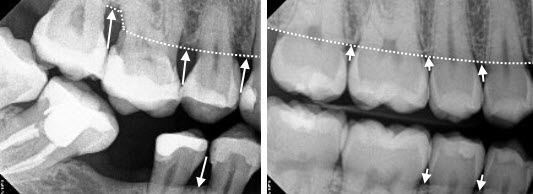 Bone level in an unhealthy and healthy mouth
Bone level in an unhealthy and healthy mouth
Increased food and plaque accumulation – When teeth lose contact with one another the space that forms between them allows for food to easily collect in the area. Food impaction can injuregum tissue and cause bad breath. Continual food impaction can cause cavities, destroys gum tissue and surrounding bone creating large pocketing into which more debris can gather. Because this cycle of destruction happens below the gum line, it can go unnoticed for a long time. Only regular visits to the dentist will allow you to get baselines charted and monitored.
Tooth Decay – With increased food impaction comes a higher incidence of tooth decay. Food impaction can become a chronic situation. You will likely feel the need to floss after almost every meal and food can become submerged so far into the gum pocket that it becomes difficult to removed. Decay can go unnoticed until pain or a dental exam.
Sinus Collapse – When an upper tooth is removed, over time, the floor of the sinus begins to collapse into the space where the tooth root used to occupy interfering with the space needed for a future dental implant.
Root Exposure – The root of the tooth is covered with a tissue that is much less calcified and more sensitive than enamel. As a tooth moves out of it’s position when it over-erupts or tips more of the root tissue will become exposed. Patients often notice more sensitivity to hot and cold sensations and a higher incidence of cavities along this softer root portion of the tooth.
Muscle Tension – When remaining teeth move out of alignment the whole bite can be thrown off. Forces may not be evenly distributed among the teeth and some teeth may meet before the others do when chewing. This imbalance causes extra stress on facial muscles and joints (TMJ) that are also compensating. Tense muscles results in headaches, neck pain, earaches, upper back and shoulder discomfort.
TMJ – An uneven bite can quickly become a TMJ issue. Clicking, popping jaw joints, grating sounds, pain in the cheek muscles and uncontrollable jaw or tongue movements are not uncommon side affects of the missing teeth.
Fracture – The uneven bite that can occur with missing teeth often causes a few teeth to bear the biting forces that should ideally be shared by all teeth. This overload of forces can cause teeth to chip and fracture. If a fracture runs through the tooth and into the root surface then the tooth cannot be save. Unfortunately, it will become another tooth that must be removed.
Facial Collapse – Our face shape and size changes as we age and although facial collapse is usually more pronounced in someone who has lost most or all of their teeth, patients who have lost several teeth may begin to notice a “caved” in look to their face compared to others of their own age group who have more teeth.
Treatment Options
Fortunately, there are several treatment options available for missing teeth that will restore the beauty and function to your mouth. It used to be that dental bridges were the most common way to replace missing teeth. Nowadays, thanks to advanced technology, dental implant are the most permanent, long term treatment solution.
Dental Implants are so effective that many of our patients who choose this option tell us that their implant is completely undistinguishable from their other natural teeth in both appearance and function!
Been a while?
Ignoring the certainty of dental collapse now will eventually leave you facing more extensive and expensive dentistry in the future. Your options will also be limited if you experience bone loss and collapse over the years. If it was many years ago that your had teeth removed and are wondering what can be done now, don’t delay any further. Your dentist will evaluate your dentition and let you know if your bite can still be restored and any missing teeth replaced.
Yours in Better Dental Health,
The Your Smile Dental Care Team
(905) 576-4537
(416) 783-3533


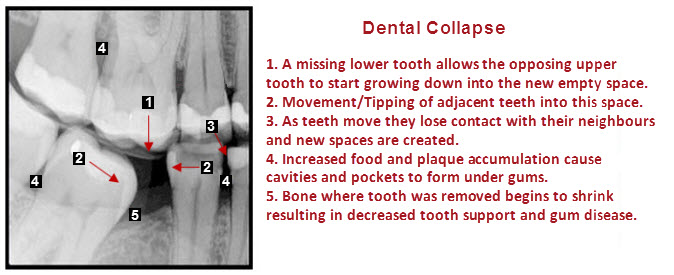
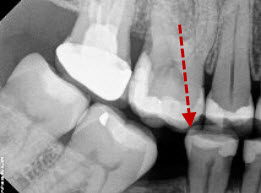
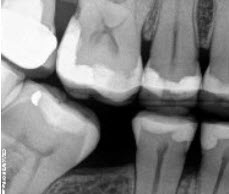
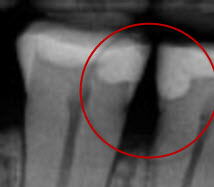
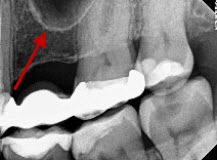

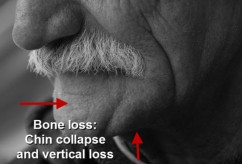
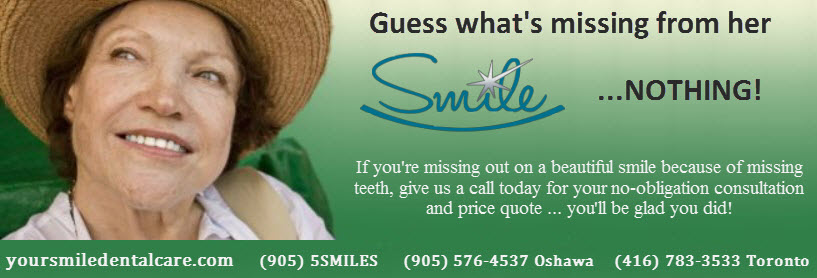
To the point Information. After facing a lot of dental issues, specially gum bleeding, Now, i understand the importance and know what things i need to follow and what to avoid. Through Dentzz Review I came across this video of where a patient from Australia shares his experience.
LikeLiked by 1 person
Wow, I’m glad that I found out about the consequences that come with missing a tooth. One of my teeth got knocked out in the middle of my jaw. I’ve been considering leaving it alone to save money on a denture or a dental implant, but it seems like I may be better off having that taken care of after all. The information about how missing any of my upper teeth can cause sinus collapse makes me feel particularly concerned about what might happen if I don’t have that tooth replaced. I don’t want the floor of my sinuses to collapse into the space in my mouth that’s empty, so it seems like filling that hole with a dental implant is a good idea after all.
http://www.nordeldentalclinic.com/smile_reconstruction.html
LikeLike
Thanks for sharing this article with us, Dr. Axelrod. I’ve been trying to research gum disease because it runs in my family. I’m glad that you dedicated a section to discuss it. Do you have any tips to combat gum disease? I just want to make sure that I stay healthy. Thanks for writing this; I’ll be sure to share it with some of my friends.
LikeLike
Keep sharing such articles with us .I am looking for blog of missing teeth consequences.your article gives me the lot many many things to learn.
LikeLiked by 1 person
Thanks for the information similar problem me faced so my last right Lower side teeth bucually and tilted removed and placed one implant teeth immediate now by seeing this getting Happy me did correct method to avoid future problem
LikeLike